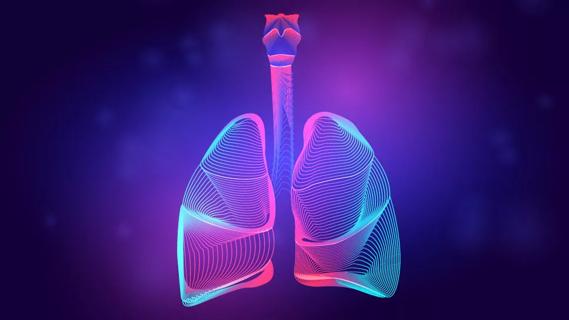Decongestion, therapy titration and readmission rates comparable to those with traditional hospital care

A predominantly virtual care model of hospitalization at home is effective for stabilization and treatment of acute heart failure (HF), achieving low readmissions rates. It is also broadly accepted by patients. So finds a new retrospective analysis published as a research letter in JACC: Heart Failure by researchers with the Cleveland Clinic Hospital Care at Home program at Cleveland Clinic Florida.
Advertisement
Cleveland Clinic is a non-profit academic medical center. Advertising on our site helps support our mission. We do not endorse non-Cleveland Clinic products or services. Policy
“Our results show that IV diuresis, decongestion and titration of therapy for acute heart failure can be accomplished safely at home,” says corresponding author Trejeeve Martyn, MD, MSc, Director of Heart Failure Population Health for Cleveland Clinic. “Outcomes including readmission rates were similar in patients who received care through the virtual model versus in a brick-and-mortar setting.”
Begun in the mid-1990s, the national hospital-at-home movement aims to improve patient outcomes, provide a better care environment for caregivers and support more durable healthcare delivery. In 2020, reimbursement for the model on par with traditional hospitalization became available in the U.S. with passage of the Acute Hospital Care at Home program waiver by the Centers for Medicare & Medicaid Services.
Since 2023, the Cleveland Clinic hospital at home (HaH) program in Florida has treated more than 2,800 patients for acute conditions including HF, pneumonia and kidney infection. Eligibility is based on a complete medical evaluation and determined in the emergency department or after an overnight hospital stay.
Patients admitted to the program are electronically connected to a clinically integrated virtual command center (CIVC) at a Cleveland Clinic hospital in Vero Beach, Florida, through Bluetooth-enabled equipment they can take home. The equipment facilitates transmission of biometric data as well as bidirectional communication and coordination. A CIVC team of physicians, advanced practice providers and nurses is responsible for directing HaH care.
Advertisement
“A nurse or paramedic does initial intake, starts an IV line and can administer medications, but daily assessment by the hospitalist physician or a consulting cardiologist is done remotely, which makes our hospital-at-home model for heart failure unique,” Dr. Martyn observes.
To assess outcomes, Dr. Martyn and colleagues retrospectively compared data from patients with acute or decompensated HF treated in the HaH program versus in a traditional hospital setting.
The participants were 395 adults (median age of 79) with an ICD-10 diagnosis of acute HF who received care through one of five Cleveland Clinic Florida locations between April 2023 and August 2024. All 395 passed a geographic screening and a subsequent screen for clinical and psychosocial appropriateness for HaH care. Of these, 215 patients were approached to enroll in the HaH program, of whom 194 (90.2%) consented to enroll. The remaining 201 patients received treatment in a brick-and-mortar hospital.
“It’s astonishing that 90% of eligible patients in our institution — many of whom had previously been hospitalized for heart failure — opted for the hospital-at-home program,” says Dr. Martyn. “At a time when they were acutely ill, dyspneic and concerned enough to come to the emergency department, they still preferred stabilization in their own home over the brick-and-mortar hospital experience.”
Data on patients’ sociodemographic characteristics, vital signs and laboratory values (including N-terminal pro-B-type natriuretic peptide [NT-proBNP]) were extracted from electronic medical records, as were data on readmissions or death at 30 days. Use of core medications for HF also was assessed and a comprehensive score for guideline-directed medical therapy (GDMT) was tabulated.
Advertisement
The authors aimed to determine whether the HaH program:
At baseline, no differences were found between the two cohorts in NT-proBNP levels, rates of previous hospitalization for HF or distribution of a previously validated readmission risk score.
Eighty-four percent of patients enrolled in the HaH program completed care without transfer to a brick-and-mortar facility for imaging, testing, procedures or care escalation. They also had a lower 30-day readmission rate than their counterparts in a traditional hospital (12.4% vs 16.9%), although the difference was not statistically significant (P = .255). Mortality at 30 days was highly comparable between the groups (3.6% vs. 3.0%, respectively).
The HaH and hospitalized groups were also similar in terms of increases in GDMT score and in net changes in mean diastolic blood pressure, mean systolic blood pressure and heart rate between admission and discharge.
Among HaH participants, substantial improvements were noted in all aspects of comprehensive GDMT, with use or titration of all recommended therapies being statistically comparable to rates in the traditional hospital group.
“Patients admitted to the hospital-at-home program were safely decongested using IV diuretics, with significant weight loss and minimal safety events,” Dr. Martyn notes. “Our findings suggest that a largely virtual acute care model is effective in improving appropriate GDMT prescribing.”
Advertisement
“It’s important to recognize that the use of guideline-directed medical therapy historically improves minimally after HF hospitalization, despite this event clearly indicating increased risk of further hospitalization and death,” adds study co-author Jerry Estep, MD, Division Chair, Cardiovascular Medicine, Cleveland Clinic Florida. “Hospital-at-home initiation and titration of guideline-directed medical therapy is one potential strategy to fill these gaps in care.”
Dr. Martyn says this study’s results are in line with previous published data showing higher experience scores across multiple domains for hospital-at-home care versus brick-and-mortar care. The lower-than-expected rates of 30-day readmission after discharge and death are an encouraging safety signal, he adds.
“We showed that it’s possible to titrate GDMT for heart failure with Bluetooth-transmitted blood pressures, heart rates and labs coming from patients at home,” he says. “That’s an important facet of acute heart failure management for which there hasn’t been very much evidence to date.”
The next steps for Cleveland’s HaH program are studies involving larger series of patients and development of a consortium with Mayo Clinic to generate more outcomes data and implement best practices for the treatment of HF and other diseases in a virtual hospital setting.
“Ultimately,” says Dr. Estep, “a randomized controlled trial adequately powered to compare the safety and efficacy of hospital-at-home versus brick-and-mortar care is needed to best assess the viability of scaling this model of care and to influence its adoption.”
Advertisement
Advertisement

Experts are challenging the one-size-fits-all paradigm

Panel proposes staging and treatment protocols that support harmonized evaluation and management of heart failure in patients with congenital heart disease

Eminent clinician-researcher brings special expertise in nutritional interventions for heart failure

Recent volume and outcomes data in two major realms of cardiovascular care

Volatile organic compounds have potential in heart failure diagnostics

Basic understanding of condition and treatment is lacking

Indications and issues concerning cardiac resynchronization therapy, conduction system pacing

First-in-world implantation performed at Cleveland Clinic